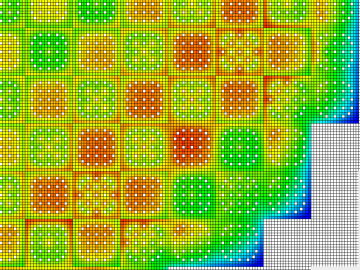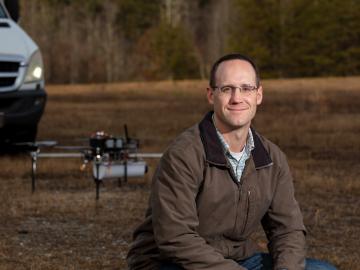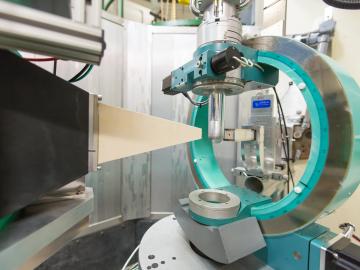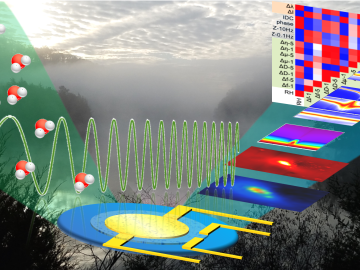
Filter News
Area of Research
- Advanced Manufacturing (1)
- Biology and Environment (9)
- Computer Science (2)
- Energy Science (37)
- Energy Sciences (1)
- Fusion and Fission (2)
- Fusion Energy (3)
- Materials (38)
- Materials for Computing (5)
- National Security (6)
- Neutron Science (34)
- Nuclear Science and Technology (12)
- Nuclear Systems Modeling, Simulation and Validation (1)
- Quantum information Science (1)
- Supercomputing (20)
News Topics
- (-) Advanced Reactors (14)
- (-) Artificial Intelligence (9)
- (-) Energy Storage (22)
- (-) Grid (7)
- (-) Materials Science (39)
- (-) Mathematics (2)
- (-) Mercury (2)
- (-) Nanotechnology (17)
- (-) Neutron Science (38)
- (-) Security (3)
- (-) Space Exploration (2)
- 3-D Printing/Advanced Manufacturing (29)
- Big Data (13)
- Bioenergy (15)
- Biology (7)
- Biomedical (22)
- Biotechnology (2)
- Buildings (1)
- Chemical Sciences (5)
- Clean Water (2)
- Composites (2)
- Computer Science (45)
- Coronavirus (25)
- Critical Materials (2)
- Cybersecurity (6)
- Environment (33)
- Exascale Computing (4)
- Frontier (1)
- Fusion (14)
- High-Performance Computing (3)
- Isotopes (8)
- Machine Learning (8)
- Materials (2)
- Microscopy (9)
- Molten Salt (2)
- National Security (2)
- Nuclear Energy (31)
- Physics (15)
- Polymers (7)
- Quantum Science (14)
- Summit (17)
- Transportation (17)
Media Contacts

A team led by Oak Ridge National Laboratory developed a novel, integrated approach to track energy-transporting ions within an ultra-thin material, which could unlock its energy storage potential leading toward faster charging, longer-lasting devices.

As CASL ends and transitions to VERA Users Group, ORNL looks at the history of the program and its impact on the nuclear industry.

Oak Ridge National Laboratory researchers have developed artificial intelligence software for powder bed 3D printers that assesses the quality of parts in real time, without the need for expensive characterization equipment.

Horizon31, LLC has exclusively licensed a novel communication system that allows users to reliably operate unmanned vehicles such as drones from anywhere in the world using only an internet connection.

Pick your poison. It can be deadly for good reasons such as protecting crops from harmful insects or fighting parasite infection as medicine — or for evil as a weapon for bioterrorism. Or, in extremely diluted amounts, it can be used to enhance beauty.

Oak Ridge National Laboratory scientists evaluating northern peatland responses to environmental change recorded extraordinary fine-root growth with increasing temperatures, indicating that this previously hidden belowground mechanism may play an important role in how carbon-rich peatlands respond to warming.

A UCLA-led team that discovered the first intrinsic ferromagnetic topological insulator – a quantum material that could revolutionize next-generation electronics – used neutrons at Oak Ridge National Laboratory to help verify their finding.

An all-in-one experimental platform developed at Oak Ridge National Laboratory’s Center for Nanophase Materials Sciences accelerates research on promising materials for future technologies.

Combining expertise in physics, applied math and computing, Oak Ridge National Laboratory scientists are expanding the possibilities for simulating electromagnetic fields that underpin phenomena in materials design and telecommunications.

Real-time measurements captured by researchers at ORNL provide missing insight into chemical separations to recover cobalt, a critical raw material used to make batteries and magnets for modern technologies.


